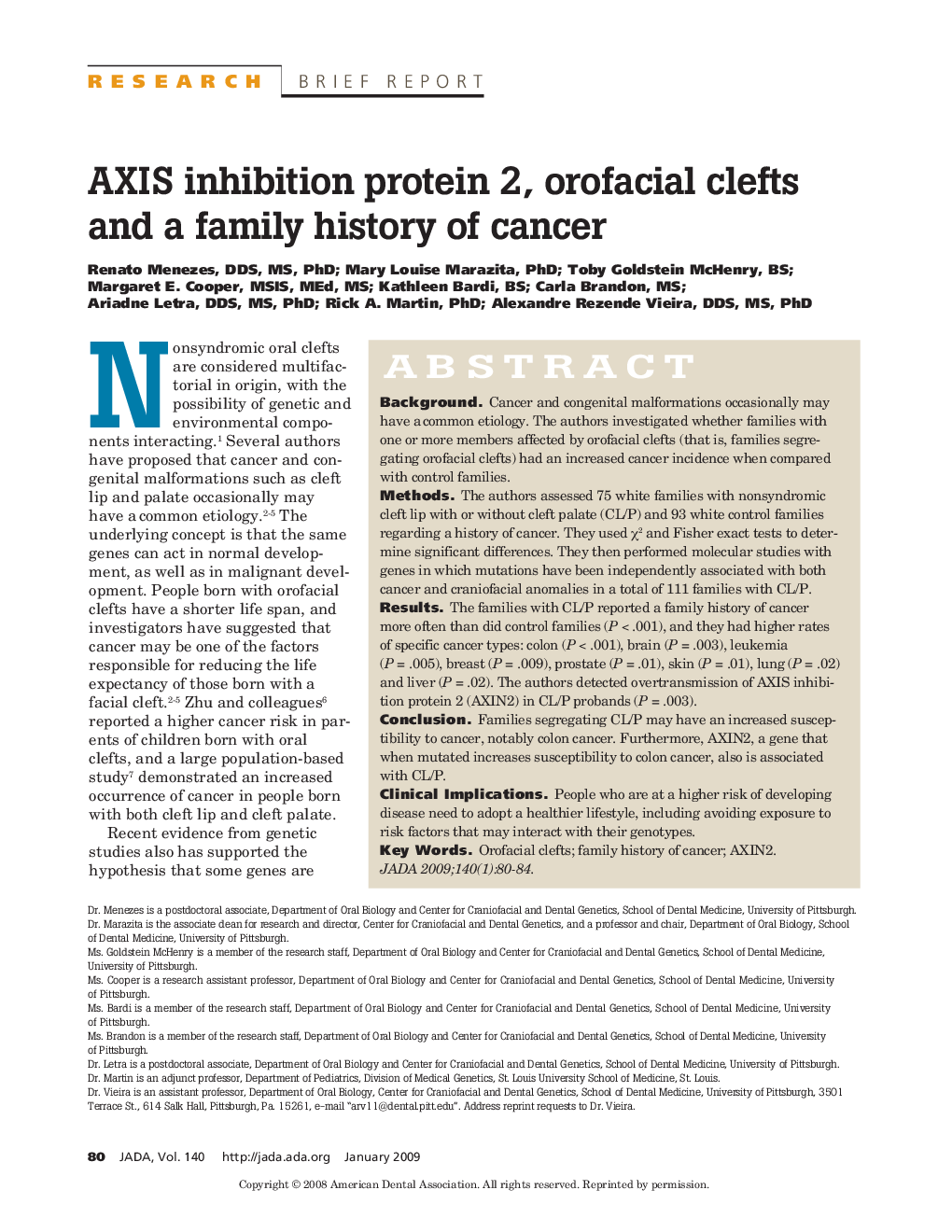| Article ID | Journal | Published Year | Pages | File Type |
|---|---|---|---|---|
| 3139019 | The Journal of the American Dental Association | 2009 | 5 Pages |
ABSTRACTBackgroundCancer and congenital malformations occasionally may have acommon etiology. The authors investigated whether families with one or more members affected by orofacial clefts (that is, families segregating orofacial clefts) had an increased cancer incidence when compared with control families.MethodsThe authors assessed 75 white families with nonsyndromic cleft lip with or without cleft palate (CL/P) and 93 white control families regarding a history of cancer. They used χ2 and Fisher exact tests to determine significant differences. They then performed molecular studies with genes in which mutations have been independently associated with both cancer and craniofacial anomalies in a total of 111 families with CL/P.ResultsThe families with CL/P reported a family history of cancer more often than did control families (P <.001), and they had higher rates of specific cancer types: colon (P <.001), brain (P = .003), leukemia (P = .005), breast (P = .009), prostate (P = .01), skin (P = .01), lung (P = .02) and liver (P = .02). The authors detected overtransmission of AXIS inhibition protein 2 (AXIN2) in CL/P probands (P = .003).ConclusionFamilies segregating CL/P may have an increased susceptibility to cancer, notably colon cancer. Furthermore, AXIN2, a gene that when mutated increases susceptibility to colon cancer, also is associated with CL/P.Clinical ImplicationsPeople who are at a higher risk of developing disease need to adopt a healthier lifestyle, including avoiding exposure to risk factors that may interact with their genotypes.
